Planning worship?
Check out our sister site, ZeteoSearch.org,
for 20+ additional resources related to your search.
- |
User Links
Person Results
‹ Return to hymnal
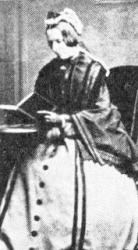
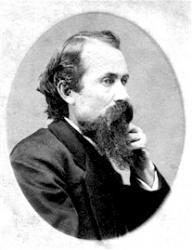
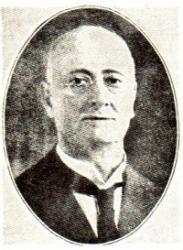
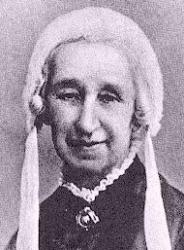
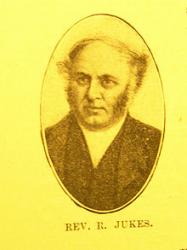
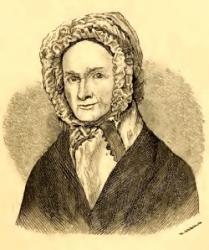
Export as CSV
Charles J. Butler
Hymnal Number: d65 Author of "I was once far away from the Savior, And as vile" in The Supplement to "The Century Gospel Songs" Charles J Butler USA 1860- Butler, a Methodist, speaks of a voyage he took from his home, Camden, NJ, as a bachelor, to Britain around 1894, stating he roamed around the British Isles for 14 months through Scotland, Ireland, Britain, and Paris, dealing with ship stewards, street urchins, and visiting famous sights. He wrote about his trip in 1901. He later resided in Philadephia and was a salesman and musician. He wrote “Heart Melodies #3” with Charles Bentley (1897). He is possibly the listed secretary of the YMCA in Philadelphia in 1920.
John Perry
Charles J. Butler
Elizabeth Codner

1824 - 1919 Hymnal Number: d87 Author of "Lord, I hear of [that] [the] showers of blessing" in The Supplement to "The Century Gospel Songs" CODNER, Elizabeth (née Harris) was born in Dartmouth, Devon in 1823. Croydon, Surrey, 28 March 1919. She was interested in the mission field from an early age, and two of her early publications were entitled The Missionary Ship (1853) and The Missionary Farewell (1854) relating to the Patagonia Mission (later the South American Missionary Society). She married William Pennefather at the Mildmay Protestant Mission in London, and edited the mission’s monthly Woman’s Work in the Great Harvest Field. At age 17, she was editing a magazine for the Patagonia Mission, later the South American Missionary Society. She died in Croydon, Surrey on 28 March 1919.
NN, Hymnary
Elizabeth Codner
S. Wesley Martin
1839 - 1939 Hymnal Number: d153 Author of "Gospel bells, how they ring" in The Supplement to "The Century Gospel Songs" Martin, Samuel Wesley, author of "The Gospel Bells are ringing" (The Gospel Message), was born at Plainfield, Illinois, Jan. 20, 1839.
--John Julian, Dictionary of Hymnology, Appendix, Part II (1907)
==================
Born: January 20, 1839, Plainfield, Illinois.
Martin was organist and choirmaster at St. Chrysostom’s Episcopal Church, Chicago, Illinois (1896-1902). His works include:
The Welcome Hour, for Use in Singing Schools, Choirs, Social Circles, Musical Conventions, Glee Clubs, Concerts, Etc., with W. H. Walter, 1877
Sources:
Julian, p. 1579
http://www.hymntime.com/tch/bio/m/a/r/t/martin_sw.htm
S. Wesley Martin
Aldine S. Kieffer

1840 - 1904 Hymnal Number: d139 Author of "Say, are you ready" in The Supplement to "The Century Gospel Songs" Full name Aldine Silliman Kiefer
Aldine S. Kieffer
C. R. Blackall

1830 - 1924 Hymnal Number: d160 Author of "By and by we shall meet" in The Supplement to "The Century Gospel Songs" Blackall, Christopher Ruby, M.D., born in New York State, 1830, and educated for the medical profession. For 15 years he followed his profession, including service in the army during the civil war. Subsequently he managed, for 14 years, a branch of the Baptist Publication Society, taking at the same time great interest in Sunday School work. He edited the Advanced Bible Lesson Quarterly, for 3 years, and also Our Little Ones.
1. The prize is set before us. Heaven anticipated. This is one of Dr. Blackall's most popular hymns for children. It was written in 1874 for the Sunday School of 2nd Baptist Church, Chicago, Illinois, and set to music by H. R. Palmer. It first appeared in Palmer's Songs of Love for the Bible School, 1874, from whence it has passed into numerous collections, including I. D. Sankey's Sacred Songs and Solos, Lond., 1881.
2. Follow the paths of Jesus. Following Jesus. This is included in the Baptist Hymn [& Tune] Book, Phila., 1871, No. 701.
3. Do the right, never fear. Duty . In W. R. Stevenson's School Hymnal, Lond., 1880, No. 269.
-- John Julian, Dictionary of Hymnology (1907)
C. R. Blackall
Alexcenah Thomas
1857 - 1910 Hymnal Number: d42 Author of "Bring them in
Bring them in" in The Supplement to "The Century Gospel Songs"
Alexcenah Thomas
Jemima Luke

1813 - 1906 Hymnal Number: d63 Author of "I think, when I read that [the] sweet story of old" in The Supplement to "The Century Gospel Songs" Luke, Jemima Thompson, the wife of Rev. Samuel Luke, an Independent minister of England, was the daughter of Thomas 422 Thompson, a philanthropist, and was born at Colebrook Terrace, Islington, August 19, 1813. When only thirteen years of age she began writing for the Juvenile Magazine. She published a volume titled The Female Jesuit in 1851 and A Memoir of Eliza Ann Harris, of Clifton, in 1859, but her name is known to the Christian world almost wholly through the one hymn found in this volume. Mrs. Luke died February 2, 1906.
I think when I read that sweet 682
Hymn Writers of the Church, 1915, Charles Nutter
===============
Luke, Jemima, née Thompson, daughter of Thomas Thompson, sometime of Bath, was born at Colebrooke Terrace, Islington, Aug. 19, 1813, and was married to the late Samuel Luke, a Congregational Minister, in 1843. She was an anonymous contributor to The Juvenile Magazine at the age of 13, and subsequently pub. several works, including The Female Jesuit, 1851; A Memoir of Eliza Ann Harris, of Clifton, 1859, &c. Mrs. Luke is known to hymnody through her hymn:—
I think when I read that sweet story of old. [The Love of Jesus.] It is recorded that this hymn was composed in a stage coach in 1841, and was designed for use in the village school, near her father's seat, Poundsford Park. It was published anonymously in the Leeds Hymn Book, 1853, No. 874, in 3 stanzas of 8 lines, and has since come into use through children's hymn-books in most English-speaking countries.
--John Julian, Dictionary of Hymnology (1907)
Jemima Luke
Richard Jukes

1804 - 1867 Hymnal Number: d16 Author of "By faith I view my Savior dying" in The Supplement to "The Century Gospel Songs" Rv Richard Jukes United Kingdom 1804-1867. Born at Clungunford, Shropshire, England, his father a stone mason, he was a prankster when young. He followed his father’s trade and became a stone mason for awhile before becoming an itinerant preacher. In 1829 he was part of a team missioning in Wiltshire and Aldbourne. His preaching was sometimes disturbed by efforts to disband the crowd, he even at times had eggs thrown at him. However, a society was formed and a barn was obtained for a place of worship. He was known as “the bard of the poor”. Over time he became a popular Primitive Methodist minister and hymn writer. He married Phoebe Pardoe (1805-1826) in 1825, but she died of typhus after less than a year of marriage. Later, after her death, he married Charlotte Smith (1806-1873), and they had eight children: Mariam, Charlotte, Thomas, Joshua, Amelia, Rowland, Richmond, and Martha. He ministered from 1827 to 1859 at 17 different circuits.. He ministry was widely appreciated. It is noteworthy that several of his appointments were to significant circuits of that time: Tunstall, Staffordshire, Ramsor, and Darlaston in the Black Country, where he spent a large part of his active ministry, retiring there. One trait he had was when writing hymn lyrics, he would try to pair them with popular tunes of the day and sing them in the streets so others would do the same.. and many did. He died at West Bromwich, England.
John Perry
Richard Jukes
P. H. Brown

1783 - 1861 Person Name: Phoebe H. Brown Hymnal Number: d61 Author of "I love to steal awhile away" in The Supplement to "The Century Gospel Songs" Brown, Phoebe, née Hinsdale. A member of the Congregational body, born at Canaan, Columbia County, New York, May 1, 1783, she was left an orphan when two years old. At nine she fell into the hands of a relative who kept a county gaol. These, says her son, "were years of intense and cruel suffering. The tale of her early life which she has left her children is a narrative of such deprivations, cruel treatment, and toil, as it breaks my heart to read." Escaping from this bondage at 18, she was sought by kind people, and sent for three months to a common school at Claverack, N.Y., where she learned to write, and made profession of faith in Christ. In 1805 she was married to Timothy H. Brown, a painter, and subsequently lived at East Windsor and Ellington, Connecticut, Monison, Mass., and at Marshall, Henry County, Illinois. She died at the last-named place, Oct 10, 1861. Most of her hymns were written at Monison, Mass. Through a life of poverty and trial she was "a most devoted mother, wife, and Christian." Her son, the Rev. S. R. Brown, D.D. became the first American Missionary to Japan, and two of her grandchildren are now in the same mission. In addition to her hymns, two or more volumes of prose by her have been published. Her Autobiography and Poems were being prepared for publication, when the editor died, and they are yet to appear. Despite all her disadvantages, Mrs. Brown's talents and work are superior to those of any other early female hymnist of America. It is hoped that her manuscript may some day be competently examined, and selected portions from them be published. Four of her hymns appeared in Nettleton's Village Hymns, 1824, with the signature "B."
1. As once the Saviour took His seat. Penitence.
2. Go, messenger of love, and bear. Missions.
3. I love to steal awhile away. Retirement.
4. Welcome, ye hopeful heirs of heaven. Young Converts.
Of these No. 2 is a Missionary hymn, written in 1817, but first published in the Village Hymns, 1824; No. 3 was written in 1818, and few hymns have a more pathetic history. It is this:—
Mrs. Brown was living at Ellington with "four little children, in a small unfinished house, a sick sister in the only finished room, and not a place above or below where I could retire for devotion." Not far off stood the finest house in the neighbourhood, with a large garden. To-wards this the poor woman used to bend her steps at dusk, loving, as she writes, “to smell the fragrance of fruits and flowers, though I could not see them," and commune with Nature and God. This she did, never dreaming that she was intruding, her habits watched, or her motives misconstrued, till one day the lady of the mansion turned rudely upon her with "Mrs. Brown, why do you come up at evening so near our house, and then go back without coming in? If you want anything, why don't you come in and ask for it?" Mrs. B. adds, "There was something in her manner more than her words, that grieved me. I went home, and that evening was left alone. After my children were all in bed, except my baby, I sat down in the kitchen with my child in my arms, when the grief of my heart burst forth in a flood of tears. I took pen and paper, and gave vent to my oppressed heart."
The Poem then written is headed "An Apology for my Twilight Rambles, addressed to a Lady, Aug. 1818.” The original has nine stanzas, the second beginning “I love to steal awhile away.” Years after, when Nettleton was seeking original matter for his Village Hymns (1824), this piece was abridged and altered into the present familiar form, either by Mrs. Brown herself, her pastor (Mr. Hyde), or Nettleton. Its popularity was great from the first. In 1853 it was included in the Leeds Hymn Book, and thus became known to English collections. It is found in Lyra Sacra Americana, p. 29.
In 1819 Mrs. Brown wrote two hymns which were strangely overlooked by Nettleton, and did not appear till 1831 in Hastings's Spiritual Songs. These are:—
5. How sweet the melting lay. Morning.
6. 0 Lord, Thy work revive. For a Revival. Both are found in Lyra Sacra Americana, pp. 28-30.
No. 6 was altered by the author for Nason's Congregational Hymn Book, 1857. This, according to Nason, is her authorized text. It is widely used in America, and is also found in a few English collections, including Reed's Hymn Book and the New Congregational Hymn Book, and sometimes is attributed in error to Hastings.
7. Great God, we would to Thee make known. This appeared in the Mother's Hymn Book, 1834.
8. We come, 0 Lord, before Thy throne. For Sailors.
9. Grant the abundance of the sea. For Sailors. Two hymns for sailors, which appeared in Linsley and Davis's Select Hymns, 1836.
10. Assembled at [round] Thine altar, Lord. Holy Communion. This also appeared in the Select Hymns, 1836, and was altered for Nason's Congregational Hymn Book, 1857. It is a good hymn, and deserves wider adoption.
11. Jesus, this mid-day hour. Noon. "Written by special request for the Fulton Street [Noon] Prayer Meeting," about 1857.
In addition to the foregoing there are four hymns by her in Parish Hymns (Phila.), 1843, to which they were contributed; and there may be many others in various collections which are uncredited. [Rev. F. M. Bird, M.A.]
-- John Julian, Dictionary of Hymnology (1907)
P. H. Brown
Charles H. Yatman
1855 - 1922 Person Name: C. H. Yatman Hymnal Number: d131 Author of "We will work from morn till night" in The Supplement to "The Century Gospel Songs"
Charles H. Yatman


 My Starred Hymns
My Starred Hymns


